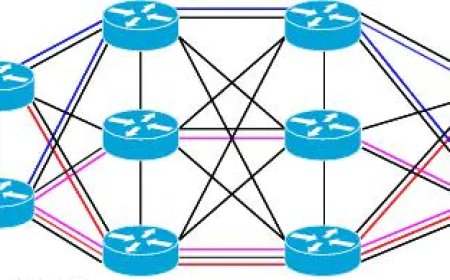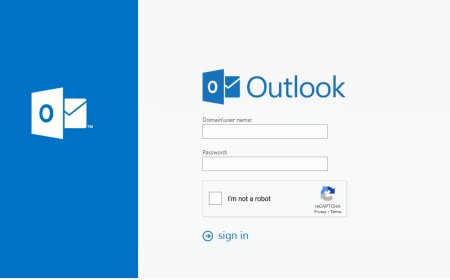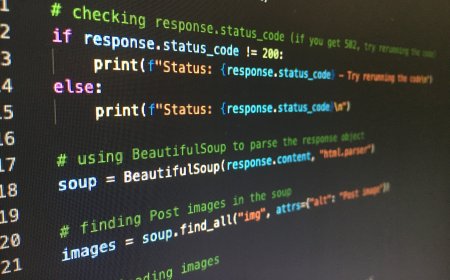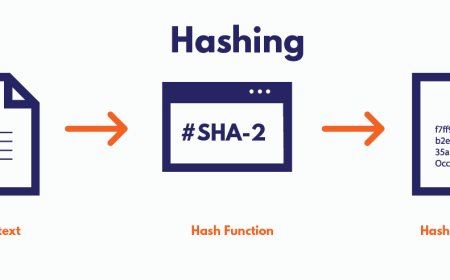Types of Cyber Attacks Explained
Cyber-attacks occur when an individual, group, or organized gang attempts to maliciously breach the security system of another person or organization. There are many types of cyber-attacks and this post give information about some of these types.

Hackers / Attackers usually aim to bypass a company or organization’s security and steal sensitive data. They use this information for extortion, to commit other frauds, or to sell it on the Dark Web. But data breaches are only one of the consequences caused by cyber attacks.
Attacks can be used to gain personal information and allow cybercriminals to commit identity thief. Also, they could be used by malicious groups to cripple an organization’s networks.
This posts give information about some types of these attacks. Since used for different purposes, some of the attack types are defined in more than one part.
MALWARE-BASED ATTACKS
Malware is short for "malicious software" and it refers to any software that is designed to harm or exploit a computer system or network.
Examples:
-
Viruses: These are programs that replicate themselves and spread to other computers. They can cause a variety of issues, such as corrupting files or stealing personal information.
-
Trojan horses: These are programs that are disguised as legitimate software, but when executed, they allow attackers to gain access to a computer and steal sensitive information or install other malware.
-
Worms: These are programs that replicate themselves and spread through networks, often causing network slowdowns or crashes.
-
Rootkits: These are sets of software tools that allow attackers to conceal the presence of malware on a system and maintain access to the compromised machine without detection.
-
Ransomware: This type of malware encrypts a victim's files and demands payment in exchange for the decryption key. They can be debilitating for organizations and individuals, and in some cases, even with payment, the data is not recovered.
-
Adware: This is a type of software that displays unwanted ads on the victim's computer.
-
Spyware: This is a type of software that tracks a user's activity and sends the information back to the attacker.
*****These are just a few examples of the many types of malware that exist. The best way to protect against malware-based attacks is to keep your software and operating system up to date, use anti-malware software and be cautious when clicking on links or opening attachments from unknown senders. Training all personnel is another key to protect againest malware-based attacks.
PHISHING ATTACKS
Phishing is a type of social engineering attack that aims to trick individuals into providing sensitive information, such as login credentials or financial information. The attackers typically use email, text messages, or phone calls to communicate with their victims.
Examples:
-
Email phishing: Attackers send an email that appears to be from a legitimate organization, such as a bank or online retailer. The email may include a link to a fake website that looks like the real thing, and the victim is asked to enter personal information, such as login credentials or credit card information.
-
Spear phishing: This is a targeted phishing attack aimed at a specific individual or organization. The attacker may use personal information, such as the victim's name or job title, to make the email appear more legitimate.
-
Vishing: This is a type of phishing attack that uses the telephone. The attacker will call the victim and pretend to be a representative of a legitimate organization, such as a bank or government agency, and ask for sensitive information.
-
Smishing: This type of phishing attack uses text messages to lure victims into providing personal information. The text message may appear to be from a bank or other trusted organization, and ask for login credentials or other sensitive information.
-
Business email compromise (BEC): These types of attacks target businesses and organizations by tricking employees into transferring money or sensitive information to the attacker.
*****It is important to be cautious when receiving emails or phone calls from unknown individuals or organizations, and not to click on links or enter personal information unless you are certain of the authenticity of the source. It is also important to be aware of the common signs of a phishing attack, such as spelling or grammar errors, or a sense of urgency or pressure to act quickly.
MAN-IN-THE-MIDDLE ATTACKS
A man-in-the-middle (MitM) attack is a type of cyber attack in which the attacker intercepts and alters communication between two parties. This can happen in a number of ways, but the goal is to gain access to sensitive information or disrupt the communication.
Examples:
-
ARP spoofing: Attackers use a technique called Address Resolution Protocol (ARP) spoofing to intercept and alter data sent over a local area network (LAN). By altering the ARP cache on a victim's computer, the attacker can redirect traffic intended for another computer to their own, allowing them to intercept and read the data.
-
SSL stripping: Attackers can use a technique called SSL stripping to intercept communication between a website and a user. SSL provides secure communication by encrypting the data sent between the website and the user. But by intercepting the communication, the attacker can strip away the SSL encryption, allowing them to see the unencrypted data.
-
WiFi eavesdropping: Attackers can set up a rogue WiFi access point and lure victims to connect to it. Once connected, the attacker can intercept and read any data sent over the network, including login credentials and other sensitive information.
*****It's important to be aware of the risks of man-in-the-middle attacks and take steps to protect yourself. This can include using a Virtual Private Network (VPN) to encrypt communication, avoiding public WiFi networks, and being cautious when visiting unfamiliar websites.
DENIAL Of SERVICE ATTACKS (DOS & DDoS)
A denial of service (DoS) attack is a type of cyber attack that aims to make a website or network resource unavailable to users. The attacker floods the target with a large amount of traffic, overwhelming the server and causing it to crash or become unresponsive.
A Distributed Denial of Service (DDoS) attack is similar to a DoS attack, but it uses multiple devices, or "bots," to flood the target with traffic. The bots are often infected with malware, and are controlled by the attacker to launch the attack simultaneously from multiple locations, making it more difficult to defend against.
Examples:
-
TCP/SYN flood: This is a type of DoS attack that floods a server with a large number of incomplete connection requests. The server becomes overwhelmed and unable to process legitimate requests.
-
ICMP flood: This type of DoS attack floods a server with a large number of Internet Control Message Protocol (ICMP) packets, overwhelming the server and causing it to crash.
-
UDP flood: This is a type of DoS attack that floods a server with User Datagram Protocol (UDP) packets, overwhelming the server and causing it to crash.
-
Amplification attacks: This type of DDoS attack uses amplification techniques to increase the amount of traffic sent to the target. For example, an attacker can use a Network Time Protocol (NTP) server to send a large amount of traffic to a target, amplifying the attack.
-
Application-layer attacks: This type of DDoS attack targets the application layer of a website or network resource, making it unavailable to users. An example would be a HTTP Flood, which targets a website by sending a high amount of HTTP requests to it.
*****It's important for organizations and website owners to have a plan in place to defend against DoS and DDoS attacks, such as using a DDoS protection service. It's also important for individuals to be aware of the risks and take steps to protect their personal devices from being used in DDoS attacks.
SQL INJECTION ATTACKS
SQL injection is a type of attack in which an attacker injects malicious code into a website's SQL (Structured Query Language) statements, in order to gain access to, modify or delete data from a database.
SQL injection attacks are typically carried out by exploiting vulnerabilities in the website's code. For example, if a website's code does not properly validate user input, an attacker can insert malicious SQL code into a text field, such as a login form, and the code will be executed by the database.
Examples:
-
Extracting sensitive data: An attacker can use SQL injection to extract sensitive information, such as login credentials or credit card numbers, from a database.
-
Modifying data: An attacker can use SQL injection to modify data in a database. For example, they could change the price of products in an e-commerce site, or change the content of a website.
-
Deleting data: An attacker can use SQL injection to delete data from a database, which can cause significant damage to a website or application.
-
Bypassing authentication: An attacker can use SQL injection to bypass authentication and gain unauthorized access to a website or application.
-
Creating a new admin user: An attacker can use SQL injection to create a new admin user, allowing them to gain full access to the website or application.
*****It's important for website developers to follow secure coding practices, such as validating user input, and using prepared statements or parameterized queries to prevent SQL injection attacks. It's also important for website administrators to keep their software and databases up to date, and to monitor logs for suspicious activity.
DNS TUNNELLING
DNS tunneling is a technique that allows attackers to use the Domain Name System (DNS) protocol to tunnel other types of traffic through a network. This allows the attacker to bypass security measures and exfiltrate sensitive data or gain unauthorized access to a network.
DNS tunneling works by encoding data in DNS queries and responses. For example, an attacker can encode a file in a series of DNS queries, and then send those queries to a DNS server. The server will respond with a series of DNS responses, each of which contains a piece of the encoded file. The attacker can then use a tool to decode the file from the DNS responses.
Examples:
-
Exfiltrating sensitive data: An attacker can use DNS tunneling to exfiltrate sensitive data from a network. For example, they could encode a file containing login credentials and send it to a DNS server outside of the network.
-
Remote access: An attacker can use DNS tunneling to gain remote access to a network. For example, they could use DNS tunneling to establish a reverse shell, which would allow them to remotely control a compromised machine.
-
Command and Control: An attacker can use DNS tunneling to set up a Command and Control (C2) channel, allowing them to remotely control a compromised machine.
*****It's important for network administrators to monitor DNS traffic for signs of DNS tunneling, such as a large number of DNS queries or responses that contain data that appears to be encoded. They can also use techniques such as deep packet inspection (DPI) to detect and block DNS tunneling traffic. Additionally, network administrators should be aware of the common signs of DNS tunneling, such as high volumes of DNS traffic and unusual patterns of DNS queries and responses.
ZERO-DAY ATTACK
A zero-day attack is a type of cyber attack that takes advantage of a previously unknown vulnerability, or "zero-day," in a system or software. These vulnerabilities are not known to the software vendor or the public, and therefore no patch or fix is available to protect against the attack.
The attackers who discover these vulnerabilities can use them to gain unauthorized access to a system, steal sensitive data, or install malware.
Examples:
-
Targeted attacks: A zero-day vulnerability can be used in a targeted attack against a specific organization or individual. For example, a state-sponsored group could use a zero-day exploit to gain access to the network of a government agency.
-
Malware distribution: A zero-day vulnerability can be used to distribute malware to a large number of users. For example, an attacker could use a zero-day exploit in a web browser to install malware on a victim's computer.
-
Remote code execution: A zero-day vulnerability can be used to execute code on a remote system. For example, a zero-day vulnerability in a popular software could be exploited by the attacker to execute code on victim's computer with the same software installed.
*****It is difficult to protect against zero-day attacks because the vulnerabilities are unknown, so it's important for organizations and individuals to have a comprehensive security plan in place. This can include keeping software and systems up to date, using security software, and monitoring for unusual activity. It's also important for organizations and individuals to be aware of the risks of zero-day attacks and to be prepared to respond quickly if a zero-day exploit is used against them.
PASSWORD ATTACKS
Password attacks are a type of cyber attack that aim to gain unauthorized access to a system or account by guessing or cracking the password.
Examples:
-
Brute force attack: This type of attack involves trying every possible combination of characters until the correct password is discovered. This can be done using automated software that rapidly generates and tests different combinations of characters.
-
Dictionary attack: This type of attack involves using a pre-computed list of words or commonly used passwords in an attempt to guess the correct password.
-
Phishing attack: This type of attack involves tricking a victim into revealing their password through social engineering techniques, such as sending an email or message that appears to be from a legitimate source and requests the password.
-
Credential stuffing: This type of attack involves using a list of leaked username and passwords from other breaches, to try and gain access to other accounts.
-
Keylogging: This type of attack involves using malware to record keystrokes on a victim's computer, allowing the attacker to capture passwords as they are typed.
*****It's important for users to use strong and unique passwords, and to avoid reusing the same password across multiple accounts. Using multi-factor authentication (MFA) can also help to protect against password attacks, as it requires the user to provide an additional form of authentication in addition to a password.
DRIVE-BY DOWNLOAD ATTACKS
A drive-by download attack is a type of cyber attack that involves tricking a victim into downloading and installing malware onto their computer without their knowledge or consent. This can happen when a victim visits a compromised website or clicks on a malicious link.
The malware can take many forms, such as a virus, Trojan, or ransomware. Once installed, the malware can give the attacker access to the victim's computer, steal sensitive information, or install additional malware.
Examples:
-
Exploiting vulnerabilities: An attacker can use a known vulnerability in a web browser or plugin to automatically download and install malware onto a victim's computer.
-
Malvertising: An attacker can place malicious ads on legitimate websites. When a victim clicks on the ad, malware is downloaded onto their computer.
-
Malicious redirects: An attacker can use a malicious redirect to send a victim to a website that automatically downloads malware onto their computer.
-
Watering hole attacks: An attacker can compromise a website that is known to be frequented by a specific group of individuals, and use it to deliver malware to the group's members.
*****It's important for users to keep their software and operating systems up to date to protect against known vulnerabilities. It's also important to be cautious when visiting unfamiliar websites or clicking on links from unknown sources. Additionally, using anti-malware software and browser extensions can help to block drive-by downloads, and regular backups can help to recover from a malware attack.
CROSS-SITE SCRIPTING (XSS) ATTACKS
Cross-Site Scripting (XSS) is a type of security vulnerability that allows an attacker to inject malicious code, such as JavaScript, into a web page viewed by other users. This can occur when a web application does not properly validate user input, allowing an attacker to insert code into a web page that will be executed by the victim's web browser.
XSS attacks can be used to steal sensitive information, such as login credentials or personal data, or to perform other malicious actions, such as redirecting the victim to a phishing website or installing malware.
Examples:
-
Stealing session cookies: An attacker can use XSS to steal the session cookie of a victim, allowing them to gain unauthorized access to a website or application.
-
Phishing: An attacker can use XSS to redirect a victim to a phishing website, where they may be prompted to enter sensitive information.
-
Key logging: An attacker can use XSS to capture keystrokes of a victim, allowing them to capture login credentials or other sensitive information.
-
Executing malicious scripts: An attacker can use XSS to execute malicious scripts on a victim's browser, allowing them to steal information or perform other malicious actions.
Preventing XSS attacks requires careful validation of user input and sanitizing of data before displaying it on the website. Additionally, using a Content Security Policy (CSP) can help to prevent XSS attacks by limiting the types of scripts that can be executed on a web page. It is also important to be aware of the common signs of XSS attacks, such as unusual behavior on a website or unexpected pop-ups or redirects.
DNS SPOOFING / POISONING
DNS spoofing and poisoning attacks are types of cyber attacks that involve manipulating the Domain Name System (DNS).
DNS spoofing, also known as DNS cache poisoning, occurs when an attacker alters the DNS information stored on a DNS server, causing it to return the wrong IP address when a domain name is queried. This can cause a victim to be directed to a fake website or to a website that has been compromised by the attacker.
DNS poisoning, also known as DNS hijacking, occurs when an attacker alters the DNS settings on a victim's device, causing it to use a rogue DNS server that is under the attacker's control. This can cause a victim to be directed to a fake website or to a website that has been compromised by the attacker.
Examples:
-
Phishing: An attacker can use DNS spoofing or poisoning to redirect victims to a fake website that looks like a legitimate website, such as a bank or online retailer. The victim may then enter sensitive information, such as login credentials or credit card information, which the attacker can then steal.
-
Malware distribution: An attacker can use DNS spoofing or poisoning to redirect victims to a website that automatically downloads malware onto their computer
-
Man-in-the-middle attacks: An attacker can use DNS spoofing or poisoning to intercept and alter communication between two parties, such as redirecting victims to a fake website or intercepting login credentials.
-
Business disruption: An attacker can use DNS spoofing or poisoning to cause a business disruption by redirecting users to a fake website or to a website that is unavailable, causing a loss of revenue or damage to the company's reputation.
-
Targeted attacks: An attacker can use DNS spoofing or poisoning to target specific individuals or organizations, for example by redirecting victims to a fake website or altering DNS entries for a specific domain, in order to steal sensitive information or cause disruption.
-
Industrial control systems: An attacker can use DNS spoofing or poisoning to disrupt the operations of industrial control systems, such as power plants or factories, by redirecting communication to rogue devices or altering the settings of legitimate devices.
INTERNET Of THINGS (IoT) ATTACKS
Internet of Things (IoT) attacks are a type of cyber attack that target connected devices, such as smart home devices, wearable devices, and industrial control systems. These devices often have limited computing power, storage and security measures, making them vulnerable to attacks.
Examples:
-
Botnets: An attacker can use malware to take control of a large number of IoT devices, creating a botnet that can be used to launch Distributed Denial of Service (DDoS) attacks or to mine cryptocurrency.
-
Eavesdropping: An attacker can use malware to listen in on conversations or record video from a smart home device with a camera or microphone.
-
Data exfiltration: An attacker can use malware to steal sensitive information, such as login credentials or personal data, from an IoT device.
-
Physical damage: An attacker can use malware to cause physical damage to an IoT-enabled device, such as a self-driving car or industrial control system, by manipulating its functions.
-
Remote control: An attacker can use malware to gain remote access to an IoT device and control it, for example, by manipulating the settings of a connected thermostat or locking the doors of a smart lock.
*****It is important for IoT device manufacturers to prioritize security in their designs, and for users to keep their devices updated with the latest security patches. It's also important to be cautious when connecting to unknown networks and to use strong and unique passwords for each device.
SESSION HIJACKING
Session hijacking is a type of cyber attack that involves intercepting and taking over an active user session on a website or application. This can occur when an attacker is able to obtain a user's session token, which is a unique identifier that is used to authenticate a user's session.
Once an attacker has obtained a user's session token, they can use it to gain unauthorized access to a website or application, impersonate the user, and perform actions on their behalf.
Examples:
-
Man-in-the-middle attacks: An attacker can use tools such as packet sniffers to intercept network traffic and obtain a user's session token.
-
Cookies stealing: An attacker can steal a user's session token by using malicious scripts to access the user's cookies or by using cross-site scripting (XSS) attacks to steal the cookie.
-
Phishing: An attacker can trick a user into revealing their session token through phishing emails or messages that appear to be from a legitimate source.
-
Sidejacking: An attacker can use a tool to sniff network traffic for session cookies and steal them.
*****To prevent session hijacking, it's important for website and application developers to use secure methods for authenticating users, such as using secure cookies and regenerating session tokens after login. It's also important for users to be cautious when clicking on links from unknown sources, and to avoid using public networks for sensitive transactions. Additionally, using multi-factor authentication (MFA) can help to prevent session hijacking, as it requires the user to provide an additional form of authentication in addition to a session token.
URL MANIPULATION
URL manipulation is a type of cyber attack that involves manipulating the parameters of a URL in order to gain unauthorized access to a website or application, or to perform other malicious actions.
The attacker can manipulate different parts of the URL, such as the query string or path, to try and exploit vulnerabilities in the website or application.
Examples:
-
SQL injection: An attacker can manipulate the query string of a URL to inject malicious SQL code into a website or application's database, allowing them to steal or manipulate data.
-
File inclusion: An attacker can manipulate the path of a URL to include a file from a different location on the server, such as a sensitive configuration file.
-
Cross-site scripting (XSS): An attacker can manipulate a URL to inject malicious code, such as JavaScript, into a website or application, allowing them to steal sensitive information or perform other malicious actions.
-
Path traversal: An attacker can manipulate the path of a URL to access files or directories on a server that should not be publicly accessible.
*****To prevent URL manipulation attacks, it's important for website and application developers to validate and sanitize user input, and to use secure methods for handling URLs. Additionally, it's important to keep software and frameworks up-to-date and to be aware of the common signs of URL manipulation attacks, such as unexpected error messages or the presence of unusual characters in a URL.
HOW TO BE SAFE?
Preventing cyber attacks requires a multi-layered approach that includes both technical and non-technical measures. There is no single solution can provide complete protection against cyber attacks, and that a comprehensive security plan is needed to effectively prevent and respond to cyber attacks.
Here are some ways:
-
Keeping software and operating systems up to date,
-
Using anti-malware software,
-
Using a firewall,
-
Using multi-factor authentication (MFA),
-
Using encryption,
-
Being cautious when clicking on links from unknown sources,
-
Regularly backing up important data,
-
Creating and implementing a security incident response plan,
-
Employee awareness and training.
What's Your Reaction?

























